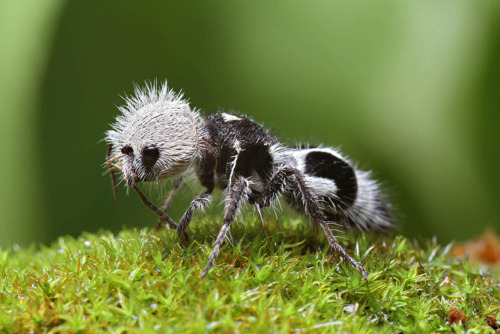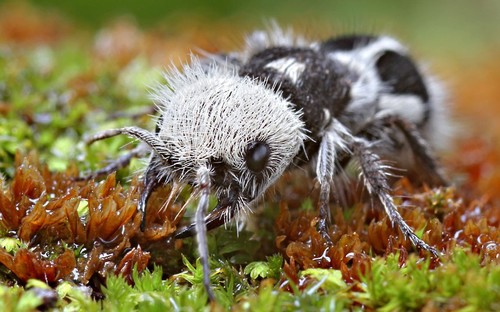In the arid and rugged regions of Chile, a creature with a striking appearance and a peculiar name dwells—the Panda Ant. Also known as the “cow killer” or “velvet ant,” this insect is neither a true ant nor a killer of cows. Instead, it belongs to the Mutillidae family, a group of wasps known for their vibrant coloration and potent stings. With its distinctive black-and-white markings reminiscent of a panda bear, the Panda Ant has become a fascinating and enigmatic creature in the entomological world. In this article, we delve into the origins, characteristics, and behaviors of the Panda Ant, shedding light on the mysteries surrounding this unique insect.
Appearance and Characteristics
The Panda Ant, scientifically known as Euspinolia militaris, is a member of the Mutillidae family, commonly referred to as velvet ants or cow killers. Despite the name, Panda Ants are not ants but solitary wasps. Females of this species possess a striking appearance with dense black and white fur covering their bodies, closely resembling the distinctive markings of a panda bear. The fuzzy appearance serves as a warning signal to potential predators, indicating that the Panda Ant is armed with a potent defensive mechanism.
The females have an elongated, slender body, while the males, on the other hand, have wings and are capable of flight. In contrast, females lack wings and rely on crawling to search for hosts to lay their eggs.

Habitat and Distribution
Panda Ants are predominantly found in the arid regions of Chile and Argentina, where they inhabit sandy and rocky landscapes. These regions offer an ideal environment for their unique lifestyle and reproductive habits.
The life cycle of the Panda Ant revolves around its parasitic behavior. The females seek out the nests of other solitary wasps or bees, where they lay their eggs near the host’s larvae. Upon hatching, the Panda Ant larvae feed on the host’s offspring, developing through several stages before reaching adulthood. This parasitic behavior allows the Panda Ant to complete its life cycle successfully.
Defensive Mechanism
Despite their endearing appearance, Panda Ants are not to be trifled with. When threatened, they can deliver a potent and painful sting. The venom they inject is powerful enough to immobilize their prey and dissuade potential predators from attacking. For this reason, they are commonly referred to as “cow killers,” though their stings are not lethal to larger animals like cows or humans.

As with many insect species, the conservation status of the Panda Ant is not well-documented. Given their relatively small size and cryptic habits, they often go unnoticed in their natural habitats. However, like many other insect species, the Panda Ant’s survival is closely tied to the preservation of its natural environment. The ongoing protection and conservation of the arid regions in Chile and Argentina are essential for safeguarding this unique insect’s future.
The Panda Ant, with its panda-like markings and intriguing parasitic lifestyle, stands as a captivating example of the diverse and fascinating world of insects. Though relatively unknown to many, this small and enigmatic creature serves as a reminder of the countless wonders that remain to be discovered in the natural world. As we continue to explore and understand the intricate ecosystems of our planet, the Panda Ant’s uniqueness will continue to add to the rich tapestry of life that surrounds us.


















